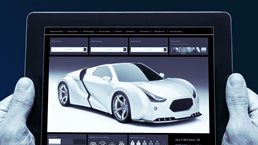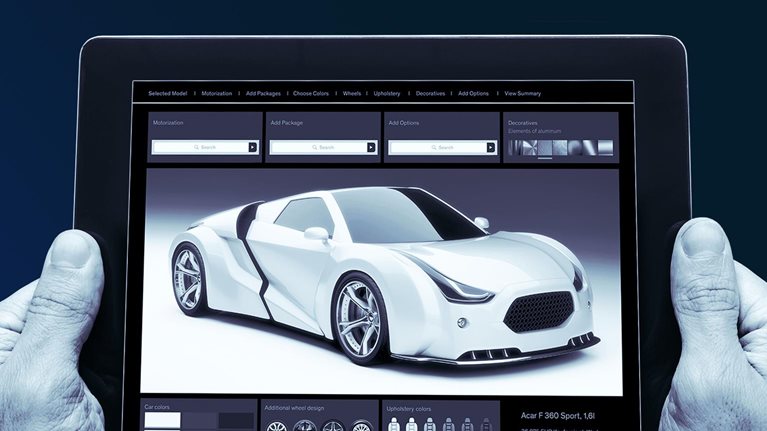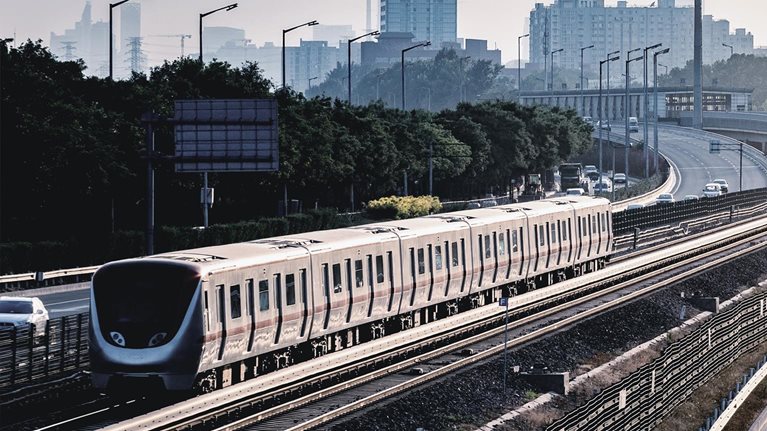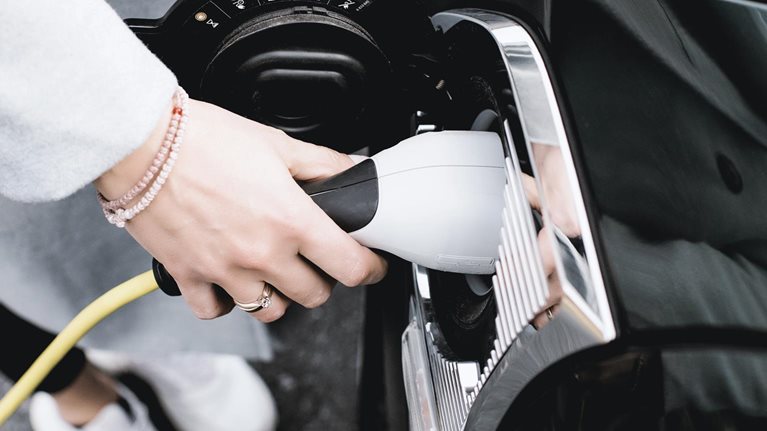The lockdown in spring 2020 had a severe impact on automotive retailers. European consumers’ purchase intent for new vehicles dropped by 24 percentage points in May 2020 compared with prepandemic levels. This came as a result of rising economic uncertainty and health concerns as well as many dealerships, service workshops, and registration offices being forced to close without much time to prepare for the new situation. In addition, OEMs reduced their production volumes in Europe by 16 percent compared with their originally planned 2020 volumes. Thus, vehicle sales declined heavily. In April, the United Kingdom, Spain, and Italy were more than 95 percent below the previous year’s levels, while Germany lost 61 percent and France lost 89 percent of new car sales compared with the previous year. Despite a strong recovery in the subsequent months, new vehicle sales are still down 28 percent as of October year-to-date in the EU5 economies (Germany, France, Italy, the United Kingdom, and Spain).
Given the speed and nature of the pandemic’s impact, automotive retailers suddenly faced significant uncertainty, further exacerbated by unclear regulations (for example, the scope and length of closed dealerships) and delayed government financial support such as furlough schemes, increase in car purchasing subsidies).
Will a second lockdown be as severe or less consequential for automotive retailers in the largest European (EU5) vehicle markets? This article shares our newest automotive-buyer insights to provide a perspective on the expected impact of the most recent shutdown in Germany, the United Kingdom, France, Italy, and Spain.
How do the lockdown restrictions compare?
The current lockdown, enacted in November 2020, comes from a different starting position—it is expected to be shorter, have fewer restrictions, and offer more car subsidies from the government. This is also reflected in our car-buyer research that shows the current EU lockdown is perceived as less challenging and disruptive than the one in the spring with 44 percent of respondents stating it as being slightly less challenging, 21 percent as slightly more challenging, and the remaining 35 percent as the same as the first lockdown.
Thus, we expect the shutdown to have a lower impact on automotive retailers, but it will differ by country. Germany, Italy, and Spain are exposed to more “favorable” regulatory circumstances, while the United Kingdom and France will again cope with closed dealerships. The regulatory differences between the two lockdowns can be best understood by looking at four different categories: lockdown stringency, restrictions for automotive retailers, car purchase incentives, and general economic support.
Lockdown stringency
Across countries, the severity of regulatory measures has significantly decreased compared with the first lockdown, according to Oxford University’s COVID-19: Government Response Stringency Index (as of November 18, 2020) (Exhibit 1). However, there are clear differences across countries: Germany, Italy, Spain, and the United Kingdom implemented a greater ease in regulatory measures, while France enforced a high level of restrictions with an index of 79. While this is a positive sign for economic activities overall, we need to hone in on the specific regulations that drive or hinder vehicle sales to better predict the potential effects of the second lockdown on car retail.

Restrictions for automotive retailers
As online sales (that is, fully online transactions without any physical interaction) account for only a small percentage of car sales in the EU5 today, being allowed to keep dealerships open is extremely important for retailers. In Germany, Italy, and Spain, dealerships and vehicle services may remain open, which is a significant difference from the first lockdown. Dealerships in the United Kingdom and France must close their showrooms, but they can continue to sell through “click-and-collect” practices. While vehicle registration offices were largelyclosed during the first lockdown, preventing new vehicle registrations, they are now allowed to remain open in all EU5 countries.
Would you like to learn more about our Automotive & Assembly Practice?
Car purchase incentives
In the past, government car-buying incentives have had a significant impact on vehicle purchases and thus is worth a closer look. The EU5 countries, except Spain, already had subsidies in place prepandemic for purchases of new electric vehicles and plug-in hybrids to accelerate the adoption of low-emission vehicles. These subsidies have now been expanded and repurposed to support the struggling automotive industry.
Germany, France, Italy, and Spain significantly increased their subsidies and trade-in premiums, with only the United Kingdom leaving their respective policy untouched. Italy and Spain also introduced subsidies for low-emission internal combustion engine vehicles. While the country’s financial support depends on the vehicle type, France offers the largest subsidies for car buyers at up to 12,000 euros for selected battery-electric vehicles (BEV). In addition to government subsidies, financial incentives from the OEMs and dealers play a key role in bolstering demand, given that 19 percent (United Kingdom) to 35 percent (Italy) of car buyers in the EU5 are looking for a discount of at least 20 percent on vehicle purchases in the next one to two months.
General economic support
In addition to targeted support schemes for the automotive industry, overarching support measures for businesses largely introduced during the first lockdown remain in place in all EU5 countries (for example, furlough schemes, government-backed loans, and tax breaks) and have been further strengthened in some locations. Some of these measures have the potential to significantly drive vehicle sales; for example, in Germany the 3 percent value-added tax reduction expires at the end of 2020 and might drive consumers to go through with planned vehicle purchases before year end.
How will the latest lockdown affect vehicle sales in Europe?
We expect new vehicle sales in EU5 countries to be negatively impacted, but to different degrees in the various countries and at a lower scale than in the first lockdown. Automotive retailers in Germany can expect a limited impact on their sales figures, primarily driven by more “favorable” regulatory circumstances. Although the Italian and Spanish markets are also benefiting from less restrictive regulatory circumstances, consumers have not regained confidence after the severe first lockdown and express a decreasing intent to purchase new cars. We predict dealers in France and the United Kingdom to experience the strongest impact from the second lockdown—mainly due to the forced closures of dealerships and a negative consumer sentiment trend. Several data points drive our prediction for EU5 countries.
On the positive side, overall consumer confidence and vehicle sales are at a much higher level upon entering the second lockdown, with October new car sales almost at the previous year’s level in Germany, Italy, and the United Kingdom with less than 5 percent below last year, while France is trading at –10 percent and Spain at –21 percent (Exhibit 2). Dealerships are allowed to remain open in three out of five markets, Germany, Italy, and Spain, with dealers in the United Kingdom and France permitted to offer click-and-collect sales. In addition, consumers are expected to shift to an increased use of private vehicles, with 26 percent demonstrating an increased importance of private-vehicle access compared with prepandemic levels; this figure is even higher for “lockdown-challenged” respondents, with a 38 percent increase. This demand for private mobility was also partially fueling the European used car business, which was growing strongly since spring, given increased demand and more limited supply as some owners decide to hold their cars longer. We see again now that the used business proves to be more robust with used car purchase intent only decreasing by two percentage points across Europe compared with September and expect even growth in some countries (for example, the United Kingdom).

On the negative side, after several months of constant recovery, consumer intent to buy a new car in next 12 months has, for the first time, dropped again in all EU5 countries by 13 percentage points across Europe, especially in France (–19 percentage points), the United Kingdom, and Italy (both –15 percentage points) while Germany is more stable with a six-percentage-point drop. This drop is roughly half of what we saw during the first lockdown, when new car purchase intent dropped by 24 percentage points across the EU5.
Respondents plan to delay and spend less on their next car purchase (for example, they are seeking discounts and smaller car/volume brands, and are less likely to include BEV or advanced driver assistance system features), especially in lower-income categories, while high-income respondents are less affected. Customers are making their purchase decisions more dependent on available discounts: the share of respondents who would buy independent of discounts has decreased significantly in EU markets with the biggest drops in the United Kingdom and France. The net intent to do maintenance work in the next month has decreased in all regions compared with September, especially in Italy.
In addition to these country-specific indicators, more general factors will positively impact automotive retailers in the current lockdown. These retailers acquired valuable capabilities from the first shutdown, helping them to better cope now: (1) experience on how to move into and out of a lockdown (for example, ramp down operations/employees, apply for furlough schemes, communicate to customers), and (2) technical capabilities and further advanced digital tools enabling remote selling and click-and-collect options for customers, who are increasingly shifting their car-buying preferences with a strong openness for online sales, especially among young and middle-aged car buyers.

A future beyond brick and mortar: Disruption in automotive retail
Although people are generally becoming more comfortable dealing with the pandemic from a health perspective, economic concerns remain the major reason for a purchase delay for 55 percent of respondents. Health concerns’ impact on purchase delays decreased from 35 to 25 percent between spring and September. That figure has, for the first time, increased again, although at a lower level, to 32 percent. While health concerns are fundamental and therefore difficult for retailers to address, buyers’ economic concerns can be eased with targeted offers, such as halting installments in case of COVID-19 infection or job loss.
What are the implications for automotive retailers?
Despite the less severe implications for automotive retail that we anticipate from the second lockdown, these retailers and their OEMs need to focus on six key activities to “win” in the upcoming months:
- Data-driven lead management. Fewer consumers are planning to buy a vehicle due to the second wave of COVID-19. Automotive retailers need to mitigate the risk of declining sales by enhancing their lead management capabilities (for example, through the generation and proper follow-up of digital leads).
- Remote selling. Dealers need to continue to build and expand their remote selling infrastructure and capabilities to navigate through potential further lockdowns in the upcoming months.
- Online sales. Dealers should further accelerate their sales digitalization efforts to not only sell remotely but online end-to-end, which enables significant cost reductions and accommodates the continuously increasing consumer interest in online buying and contactless services.
- Smart discounts and incentives. Leveraging microtargeting capabilities and offering the right discounts and incentives to targeted car buyers is essential, as many consumers are only willing to purchase a car under certain discount conditions, such as discount in-kind, payment deferment, or zero percent financing.
- Excelling in used car sales and aftersales. Both used car sales and aftersales income streams will remain less disrupted. Those dealers that can absorb a large share of their costs with these activities alone will navigate well through the crisis.
- Analytics-based car flow planning. The status of COVID-19 vaccine development and the second surge in infections means we can likely expect circumstances won’t significantly improve until at least mid-2021. Accordingly, we expect a continuation of short-term volatilities in supply and demand, which retailers must adapt to by professionalizing their analytics-based car flow planning and stock management.
We strongly believe that the second lockdown will be less severe for automotive retailers in the five major European Union markets. Year-on-year sales numbers for November 2020 show that France and the United Kingdom have been the hardest hit thus far, with declines of 27 percent and 30 percent, respectively. There were also decreases of 8 percent in Italy and 19 percent in Spain, while Germany remained relatively stable with a drop of only 3 percent. Nevertheless, given the current vaccination development timeline, we expect to see further ramp-ups and shutdowns of public life until at least mid-2021. Automotive retailers must therefore navigate the uncertainty at the forefront and shape “the new normal” of car buying, catering to changing car-buyer preferences in the best possible manner while also assuring seamless business operations in flexible pandemic situations.
All information in this article was current as of November 18, 2020. Given the dynamic nature of the pandemic, regulations may still evolve.


